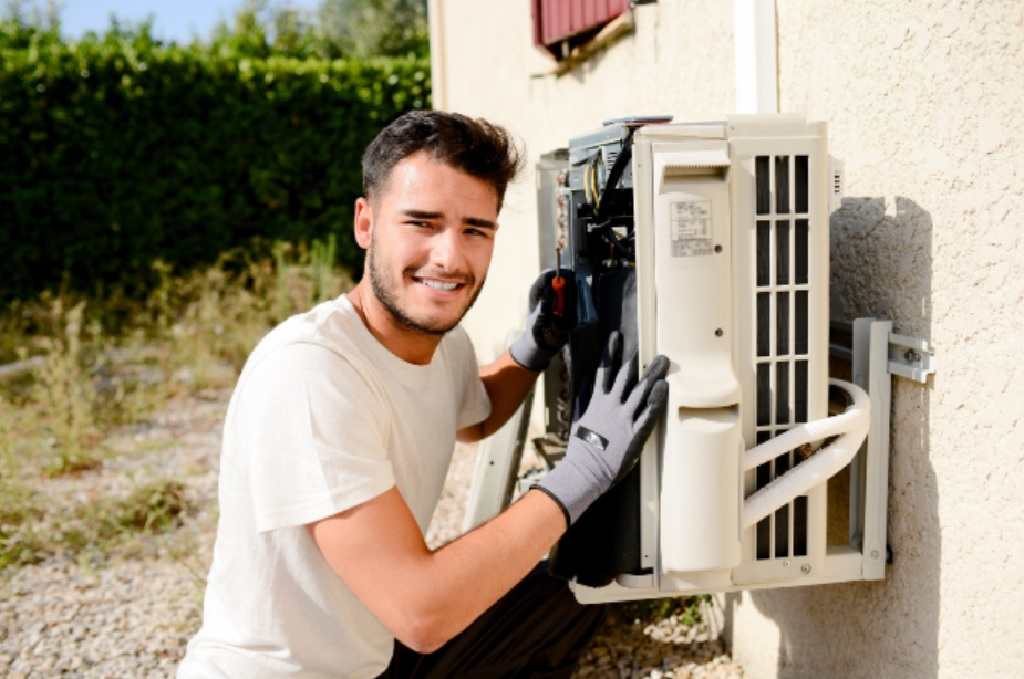BOOM! BAM! POW! No, you do not hear a fight. It’s the sound of your HVAC system not working efficiently.
You won’t always know when to replace your HVAC system, but weird noises are a common sign. If this happens to you, you might wonder what the HVAC replacement process entails.
Keep reading to find out.
Initial Estimate
The first step of an HVAC replacement is the initial estimate. A technician will review your existing system and collect information to provide an accurate proposal.
The information found will be given to the installation team. Installation might take place on the same day or the following day. The HVAC contractor will measure square footage and do load calculations based on the temperature in your location, the size of your property, and the state of the structure’s envelope or its ability to contain conditioned air when they arrive at your site.
Following the assessment, the contractor will recommend the size and type of HVAC system and any required ducting and outside envelope repairs.
Installation Team Arrival
Once the installation HVAC contractor arrives, they will share the job information. This often includes details such as:
- Equipment information
- Accessories
- Special instructions
- Installation and equipment fees
Review the packet you receive to avoid costly mistakes during or after the new air conditioner replacement.
If you have to buy a new AC through the installation company, the cost will be higher. Learn more here about which AC you should buy for replacement.
While reviewing the cost and other details, the installation team will lay down floor protection, get their tools ready, and turn off electrical circuits connected to the existing HVAC equipment.
HVAC System Removal
For your new HVAC system to be installed, you have to remove the old refrigerant. After recovering the refrigerant from the old system, the electrical wiring is disconnected from the AC.
Once removed, the existing area might need some work before a new AC can be set in place. The area needs to be cleaned and the right size. After installation, the AC cannot be moved or lifted without damage.
It’s recommended to replace your entire system, even if only one part of the system needs replacing. For example, update both the air handler and HVAC compressor simultaneously.
This way, the entire unit will be in sync, and you’ll save money in the long run.
When to Replace Your System
When upgrading one portion of the system, such as the HVAC compressor or the air handler, it is recommended that you update both systems and, at the very least, have the ductwork evaluated in case it has to be replaced.
Even if only one component of your system has to be replaced, it’s best to replace the entire system to ensure optimal system efficiency. Replacing an HVAC system is common once the repair costs become higher than the replacement cost. However, if you aren’t sure if a technician is trying to get money out of you, this is how to know when to replace your system:
- Your HVAC system is over 10 years old
- Your energy bills are higher than usual
- Your home won’t stay at a comfortable temperature
- Your system is producing odd or loud noises
- There’s an increase in dust around your home
If you aren’t sure, use the above tips and get a second opinion if you believe an installer is shady.
Is It Time for an HVAC Replacement?
The HVAC replacement process is simple for a highly trained professional. You’ll begin with an initial estimate, meet the installation team, and have your current system removed. You may do various things to expedite the installation procedure before the installation personnel comes. Antiques and irreplaceable items should be moved to a secure area. When asked to move expensive objects from work areas, many contractors are hesitant because they do not want to be held accountable in the event of an accident. Also, if you have pets, make sure they are in a safe, quiet spot away from the planned work areas.
Once that is out of the way, connecting your new unit is simple.
Make sure a replacement is right for you before getting started. Don’t forget to come back to this blog for more helpful tips.

















